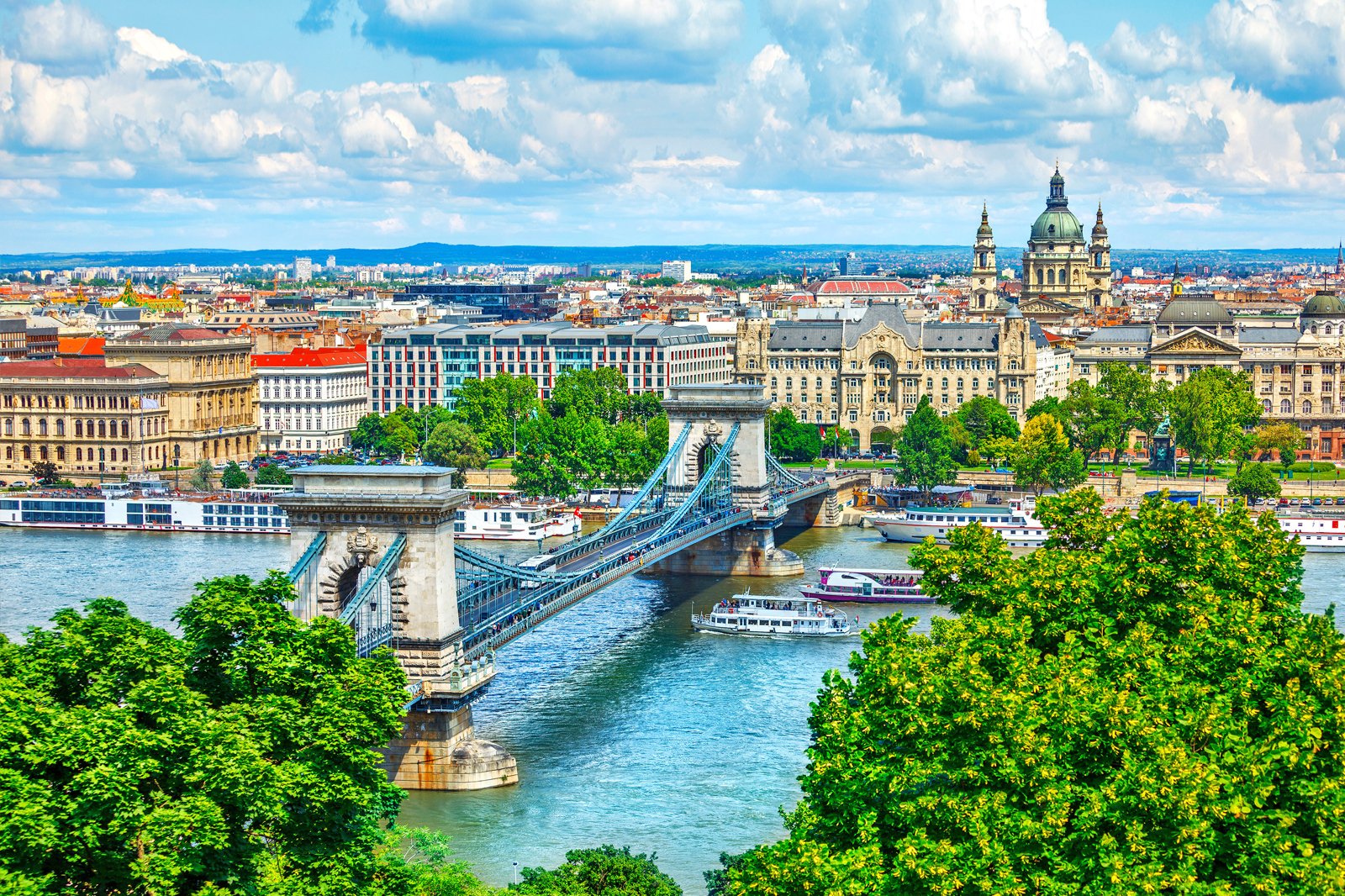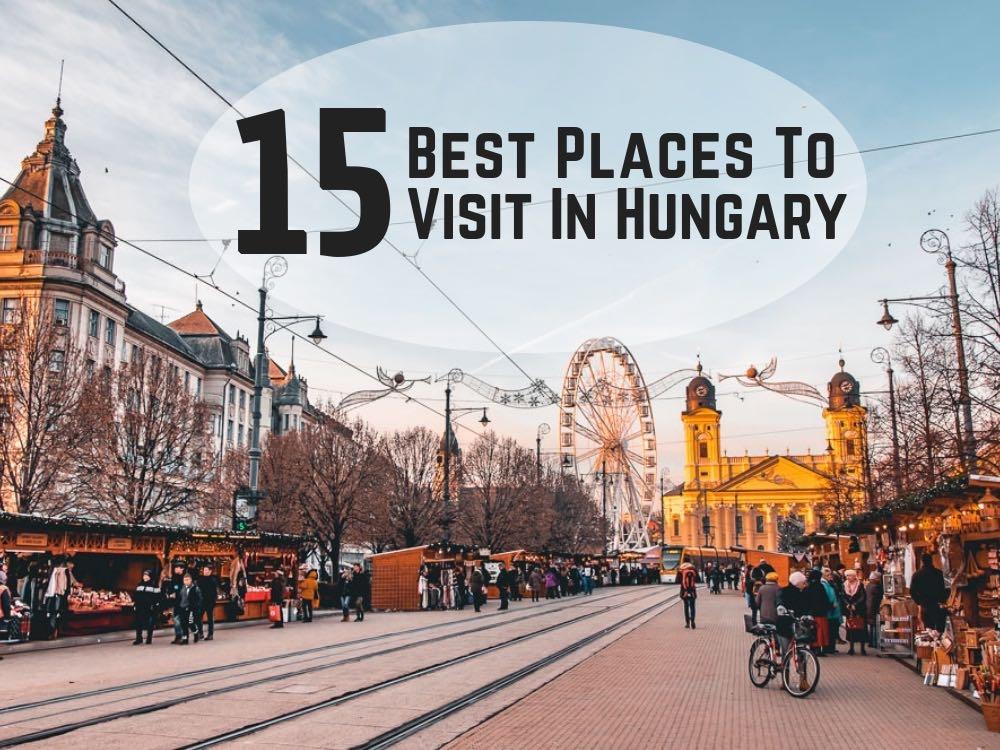
Hungary, a landlocked gem nestled in the Carpathian Basin, beckons travelers with its rich history, stunning architecture, vibrant culture, and delicious cuisine. From the majestic Danube River carving through its capital to the rolling vineyards of its countryside, Hungary offers a captivating blend of old-world charm and modern dynamism. Whether you’re a history buff, a culinary adventurer, or simply seeking a picturesque escape, this comprehensive guide will equip you with everything you need to plan an unforgettable journey to this enchanting Central European nation.
A Glimpse into Hungary’s Storied Past
Understanding Hungary’s history is key to appreciating its present. The nation’s roots stretch back to the Magyar tribes who settled the Carpathian Basin in the 9th century. Under King Stephen I, Hungary was established as a Christian kingdom in 1000 AD, marking the beginning of its long and often turbulent, yet resilient, journey.

Related Articles about Journey to the Heart of Europe: A Comprehensive Guide to Traveling in Hungary:
- Jordan: An Ancient Land Where Adventure Beckons
- Chile: A Land of Extremes and Unforgettable Adventures
- Cairo: A Symphony of Ancient Wonders and Modern Buzz
- Egypt: A Timeless Tapestry of Wonders – Unveiling the Top Attractions and Essential Travel Guide
- The Emerald Isle Beckons: Your Comprehensive Guide to Traveling Ireland
The medieval period saw Hungary rise as a significant European power, influencing trade routes and engaging in conflicts with neighboring empires. The Ottoman occupation in the 16th and 17th centuries left an indelible mark, evident in the country’s thermal baths and architectural styles. Later, Hungary became part of the vast Austro-Hungarian Empire, a period of cultural and economic flourishing that profoundly shaped its identity.
The 20th century brought immense challenges, including two World Wars and decades under communist rule. Despite these hardships, Hungary has emerged as a sovereign nation with a strong sense of national pride and a burgeoning tourism industry. This historical tapestry is woven into the very fabric of the country, from its ancient castles to its poignant memorials.
Unveiling Hungary’s Top Attractions
Hungary boasts a diverse array of attractions, catering to every interest. Here are some of the absolute must-sees:
1. Budapest: The Pearl of the Danube
The Hungarian capital is undeniably the crown jewel of the country. Divided by the majestic Danube River, Buda and Pest offer contrasting yet complementary experiences.
- Buda Castle District: Ascend to this UNESCO World Heritage site for panoramic views of the city. Explore the historic Buda Castle, Fisherman’s Bastion with its fairytale-like towers, and Matthias Church, a masterpiece of Gothic architecture.
- Parliament Building: An iconic symbol of Budapest, this magnificent Neo-Gothic edifice is a sight to behold, especially when illuminated at night. Guided tours offer insights into its opulent interiors.
- Thermal Baths: Hungary is renowned for its natural thermal springs. Indulge in the restorative waters of Széchenyi Thermal Baths (the largest in Europe), Gellért Baths (known for its Art Nouveau splendor), or Rudas Baths (with its Ottoman-era dome).
- St. Stephen’s Basilica: Admire the grandeur of this colossal Neo-Renaissance basilica, home to the mummified right hand of St. Stephen, the first king of Hungary.
- Andrássy Avenue: Stroll down this elegant boulevard, a UNESCO site, lined with grand buildings, luxury boutiques, and the Hungarian State Opera House.
- Great Market Hall: Immerse yourself in the vibrant atmosphere of this bustling indoor market, offering local produce, traditional crafts, and delicious street food.
- Shoes on the Danube Bank: A poignant memorial to the victims of the Holocaust, this collection of iron shoes stands as a somber reminder of a dark chapter in history.

2. Lake Balaton: The "Hungarian Sea"
Europe’s largest freshwater lake is a popular summer destination for Hungarians and tourists alike. Enjoy swimming, sunbathing, water sports, and exploring charming lakeside towns like Siófok, Balatonfüred, and Tihany. The Tihany Peninsula, with its Benedictine Abbey and volcanic landscape, is particularly picturesque.
3. Eger: City of Wine and History
Nestled in the northern Mátra Mountains, Eger is famed for its historic castle, Baroque architecture, and, most importantly, its wine. Explore the Eger Castle, which famously withstood Ottoman sieges, and wander through the picturesque "Szépalma" wine region, tasting the renowned Egri Bikavér (Bull’s Blood of Eger).
4. Pécs: A Mediterranean Flair
Located in southern Hungary, Pécs boasts a unique Mediterranean atmosphere, influenced by its Ottoman past and its position as a European Capital of Culture. Discover its Roman ruins, early Christian necropolis (UNESCO), Zsolnay Cultural Quarter, and vibrant student life.
5. Hortobágy National Park: The Puszta’s Wild Heart
Experience the vast Hungarian Puszta (plain) at Hortobágy, a UNESCO World Heritage site. Witness traditional herding practices, marvel at the unique nine-arched bridge, and spot diverse birdlife in this protected steppe ecosystem.
6. Szentendre: The Artist’s Village
Just a short train ride from Budapest, Szentendre is a charming riverside town known for its narrow cobblestone streets, colorful houses, and numerous art galleries and museums. It’s a delightful place to wander, soak in the artistic ambiance, and enjoy riverside cafes.
Practical Travel Tips for Hungary
To ensure a smooth and enjoyable trip, keep these tips in mind:
- Visa and Entry Requirements: Citizens of many countries can enter Hungary visa-free for short stays (usually up to 90 days within a 180-day period) as Hungary is part of the Schengen Area. Always check the latest visa regulations for your nationality well in advance of your travel.
- Currency: The official currency is the Hungarian Forint (HUF). While Euros are sometimes accepted in tourist areas, it’s best to exchange money or withdraw Forints from ATMs. Credit cards are widely accepted in cities and larger towns, but carrying some cash is advisable for smaller establishments or rural areas.
- Language: The official language is Hungarian, a Finno-Ugric language with no close relatives in Europe. While English is increasingly spoken in tourist areas, learning a few basic Hungarian phrases like "Jó napot" (Good day), "Köszönöm" (Thank you), and "Igen/Nem" (Yes/No) will be greatly appreciated.
- Electricity: Hungary uses 230V, 50Hz. The plug type is Type C and F (two-pin round connectors). You may need an adapter.
- Tipping: Tipping is customary in restaurants and for services. A 10-15% tip is generally expected for good service in restaurants, and it’s often included in the bill as "szervizdíj." Tipping taxi drivers and hotel staff is also appreciated.
- Safety: Hungary is generally a safe country for tourists. However, like any major city, be aware of your surroundings, especially in crowded areas, and take precautions against pickpocketing.
- Public Holidays: Be aware of public holidays, as many shops and attractions may be closed. Major holidays include March 15th (National Day), Easter Monday, May 1st (Labour Day), August 20th (St. Stephen’s Day), and October 23rd (National Day of the 1956 Revolution).
- Tap Water: Tap water in Hungary is generally safe to drink.
Accommodation Options to Suit Every Budget
Hungary offers a wide range of accommodation to suit all preferences and budgets:
- Hotels: From luxurious five-star establishments in Budapest to charming boutique hotels in smaller towns, hotels are plentiful.
- Apartments and Airbnb: Renting an apartment is a popular choice, especially for longer stays or families, offering more space and the option to self-cater.
- Guesthouses (Panzió): These are often family-run, providing a more intimate and local experience, typically at a more affordable price.
- Hostels: Budget travelers will find numerous hostels, particularly in Budapest, offering dormitory beds and private rooms.
- Farm Stays (Farmhouse Accommodation): For a truly rural experience, consider a farm stay in the countryside, offering a chance to connect with nature and local life.
- Thermal Hotels: Many spa towns and even Budapest itself offer hotels with direct access to thermal baths, a perfect way to relax and rejuvenate.
Navigating Hungary: Transportation Options
Getting around Hungary is relatively easy and efficient:
- By Air: Budapest Ferenc Liszt International Airport (BUD) is the main gateway to Hungary. Numerous airlines operate flights to and from major cities worldwide.
- By Train: Hungary has an extensive and well-maintained railway network operated by MÁV (Hungarian State Railways). Trains are a comfortable and scenic way to travel between cities and towns. Booking tickets in advance, especially for longer journeys or during peak season, is recommended.
- By Bus: Intercity buses provide an alternative to trains, often reaching smaller towns not served by rail. Companies like FlixBus operate extensively.
- Within Cities:
- Budapest: The capital boasts an excellent public transportation system, including a metro, trams, buses, and trolleybuses. Purchasing a travel card for multiple days is a cost-effective option. Taxis are readily available, but ensure you use reputable companies or ride-sharing apps.
- Other Cities: Most larger towns have local bus and tram services.
- Car Rental: Renting a car offers flexibility, especially for exploring rural areas and smaller villages. However, be aware of Hungarian driving laws and the need for a vignette (toll sticker) for using highways.
- Cycling: Hungary is increasingly becoming a cycle-friendly destination, with dedicated bike paths, especially around Lake Balaton and along the Danube.
The Best Time to Visit Hungary
The ideal time to visit Hungary depends on your preferences:
- Spring (April to May): This is a beautiful time to visit, with blooming flowers, pleasant temperatures, and fewer crowds. The countryside is vibrant, and outdoor activities are enjoyable.
- Summer (June to August): The peak tourist season, offering warm to hot weather perfect for enjoying Lake Balaton and outdoor festivals. However, expect larger crowds and higher prices.
- Autumn (September to October): Another fantastic time to visit. The weather is usually mild and sunny, the autumn foliage is stunning, and the grape harvest season brings a special charm, especially in wine regions.
- Winter (November to March): Budapest transforms into a magical winter wonderland with Christmas markets and festive decorations. It’s a good time for cultural exploration, thermal baths, and enjoying cozy cafes. However, some outdoor attractions may have reduced hours or be closed.
Embracing the Hungarian Experience
A trip to Hungary is more than just sightseeing; it’s an immersion into a rich culture, a warm hospitality, and a culinary heritage that will tantalize your taste buds. From the grandeur of Budapest to the tranquility of its countryside, Hungary promises an enriching and unforgettable travel experience. So, pack your bags, open your mind, and prepare to be captivated by the enduring charm of this Central European treasure.





